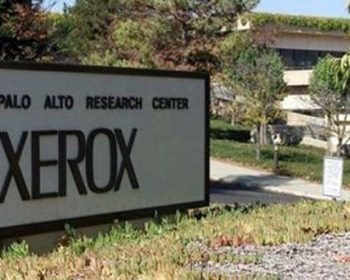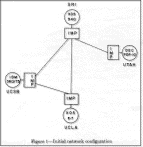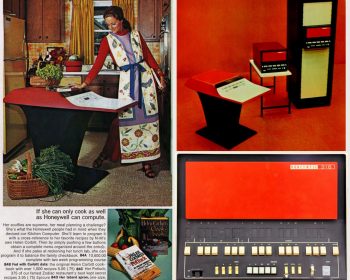Category: 1969
Xerox PARC

Founded in 1969 by Jacob Goldman, Xerox’s then chief scientist. As a division of Xerox, the Palo Alto Research Center (PARC) contributed to the foundation of many modern computing concepts like laser printing, communications, programming, and most significantly, the graphical user interface (GUI). The facility opened in July of 1970…
Linus Torvalds
AMD

Founded in 1969 and based in Sunnyvale, California, AMD is a global supplier of integrated circuits for the personal and networked computer/communications markets with facilities in the United States, Europe, and Asia. AMD produces microprocessors, Flash memory devices, and silicon solutions for communications and networking.
MOS Technology
Interface Message Processor
ARPANET

The precursor to the Internet, ARPANET was a large wide-area network created by the United States Defense Advanced Research Projects Agency. Established in 1969, ARPANET served as a testbed for new networking technologies, linking many universities and research centers. The first two nodes that formed the ARPANET were UCLA and…
UNIX

From Lucent Technologies’ “Creation of the UNIX Operating System” After three decades of use, the UNIX computer operating system from Bell Labs is still regarded as one of the most powerful, versatile, and flexible operating systems (OS) in the computer world. Its popularity is due to many factors, including its…
Stanford Arm

This robot arm was designed in 1969 by Victor Scheinman, a Mechanical Engineering student working in the Stanford Artificial Intelligence Lab (SAIL). This 6 degree of freedom (6-dof) all-electric mechanical manipulator was one of the first “robots” designed exclusively for computer control. Following experience with a couple of earlier manipulators,…
Xerox PARC

Founded in 1969 by Jacob Goldman, Xerox’s then chief scientist. As a division of Xerox, the Palo Alto Research Center (PARC) contributed to the foundation of many modern computing concepts like laser printing, communications, programming, and most significantly, the graphical user interface (GUI). The facility opened in July of 1970…
Linus Torvalds
AMD
Founded in 1969 and based in Sunnyvale, California, AMD is a global supplier of integrated circuits for the personal and networked computer/communications markets with facilities in the United States, Europe, and Asia. AMD produces microprocessors, Flash memory devices, and silicon solutions for communications and networking.
MOS Technology
Interface Message Processor
ARPANET

The precursor to the Internet, ARPANET was a large wide-area network created by the United States Defense Advanced Research Projects Agency. Established in 1969, ARPANET served as a testbed for new networking technologies, linking many universities and research centers. The first two nodes that formed the ARPANET were UCLA and…
UNIX

From Lucent Technologies’ “Creation of the UNIX Operating System” After three decades of use, the UNIX computer operating system from Bell Labs is still regarded as one of the most powerful, versatile, and flexible operating systems (OS) in the computer world. Its popularity is due to many factors, including its…
Stanford Arm

This robot arm was designed in 1969 by Victor Scheinman, a Mechanical Engineering student working in the Stanford Artificial Intelligence Lab (SAIL). This 6 degree of freedom (6-dof) all-electric mechanical manipulator was one of the first “robots” designed exclusively for computer control. Following experience with a couple of earlier manipulators,…




